Our article is devoted to the description of such a problem as overhaul of a soft roof and its technology. This topic is of great interest among people seeking to repair the roof themselves, because here we will touch on the types of repairs and the features of its implementation.
There are several ways to repair a soft roof, and all of them depend on the amount of damage to the roof and their level of complexity.
Content
Soft roofing
Repair can be of two types:
- Current. This is when roofing problems make up less than 40% of the total roof size.
- Capital. When the total component error percentage of the roof area is more than 40%.
This may seem strange, but the main reason for the leakage of the roof, consisting of soft rolled material - the destruction of the bitumen layer. It is he who provides protection for this material with the help of its waterproofing properties.

Experienced experts advise every two to three years to check the roof for various cracks and swellings, and not to wait at all (as many do!) For moisture to leak inside the room. If you adhere to such a rule, then you will not have to do a major overhaul of the soft roof for a long time. By doing a check and detecting problems in time, you can limit yourself to the usual “micro-repair” and in this way save both time and waste.
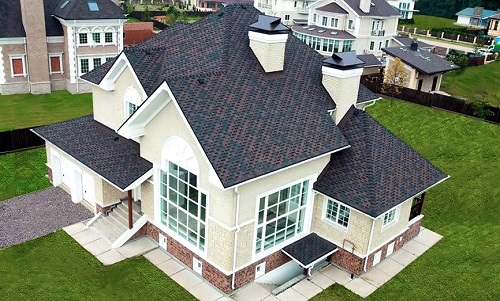
As for the process of repairing soft roofs, it is not so complicated in its implementation. Of course, if there was a need to fix the roof of the house yourself, then the technology for repairing a soft roof will be somewhat more complicated and will require more of your time and effort than repairing a roof, for example, a garage.
And a few words about the material: roll roofing is considered the simplest in terms of installation (especially with your own hands), since they just do not require special skills and equipment for installation.
Roofing materials and their device
We found that repairing a soft roof begins with determining the extent of damage to the roof. To do this, you need to do a simple thing - climb the roof and carefully inspect the entire coating.
Having done this, you may find such problems:
- Peeling, located at the junction of the canvas material, as well as in the overlap.
- Various pits and depressions in which water is held.
- Rotting of material in places of water accumulations.
- Moss and fungus (in the same water places).
- Penetration of moisture. You will find out about this if you find bloating on the surface of the cover.
- Visible mechanical problems: tears, cracks, abrasions.
So, the inspection is carried out. Now we draw conclusions and determine what type of repair the roof of the house needs.
Next, we move on to the next step - budgeting. An estimate for repairing a soft roof does not have to be compiled by specialists. This can be done independently, but only if you are fully confident in the correctness of your decisions on repairing the roof.
What does the estimate include?
We will provide a list of works that are specialists in the repair of soft roofs and which must be completed first of all:
- Fully or partially remove the old roof.
- Prepare the surface for the installation of the roof covering.
- Carry out the installation of the top layer and coat the seams of the roof.
- Take into account the cost of the upper waterproofing layer.
- Prepare combustible materials for the burner.
- Consider consumables for repair and their delivery.
If you decide to do the repair yourself, then the estimate for the repair of soft roofs can include only the price and delivery of the material that you plan to use.

If you are in doubt, to repair it yourself or to hire workers, there is a third option - contact a roof repair company.
How much does the repair cost?
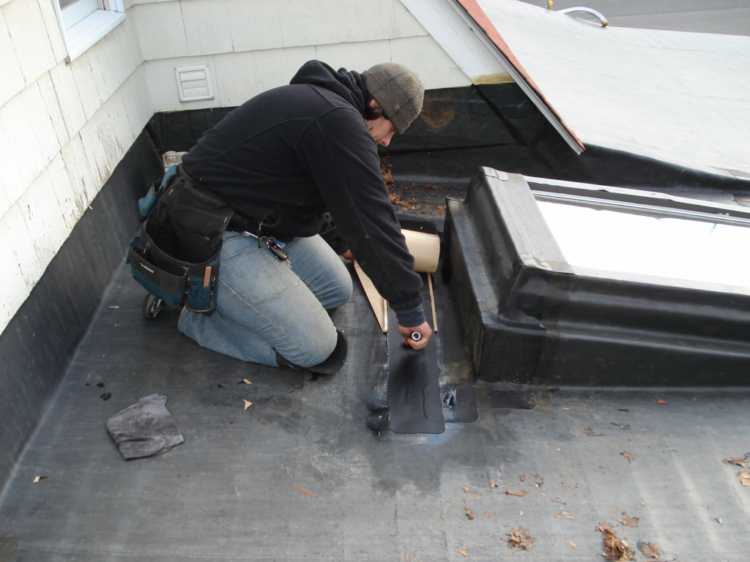
This question is of interest to those who wish to repair a soft roof with their own hands no less than the correct way to repair the roof itself. The information provided will help you find out how much you will need to spend on repairing a soft roof.
The first is the preparation of a plan of the roof with its exact dimensions. This is necessary in order to calculate the amount of required material.
The second is the clarification of the parameters (length, thickness, height) of the parapets and adjacencies to the walls, as well as the length of the eaves.
If there are shafts on the roof, then you need to find out their number and their size. The same actions apply to pipes and other various elements if they are present on the roof.
Another point is to find out the condition of the roof and preferably take photographs at the same time.
To calculate the funds spent on repairs, you also need to make an approximate list of works necessary for the repair.
And the last - a part of expenses depends on what kind of material you will use for repair.
Overhaul stages
In order to repair a soft roof with their own hands, experienced craftsmen advise you to find out some immutable rules that many self-taught masters do not follow and regret about this. But this is by no means always their fault. The fact is that most of the SNiP rules that are observed when repairing roofs were developed in Soviet times. But, as you already guessed, much has changed since then - new materials have appeared, modern technologies have been developed.
And therefore, we hasten to assure you that if you have the knowledge and confidence in what you are doing, these rules will not be of any use to you. And if the repairs are carried out by specialists, then it will be executed efficiently and quickly without peeping into the “cheat sheet” of SNiP.
So, the repair, as well as the device of the soft roof from scratch, must begin with the preparation of the base, since the material will be laid on it.
Maintenance has several options. It is possible to carry out partial replacement (patches) and repair "according to the old", when one or a couple of layers of new material is laid on the old cover.
In the case of patches, it is necessary to remove all defects in the places where they are laid. After the surface is cleaned from dust, debris and filled with sealant or bitumen mastic.
Next, a piece of roofing material, well, or another rolled material is laid.
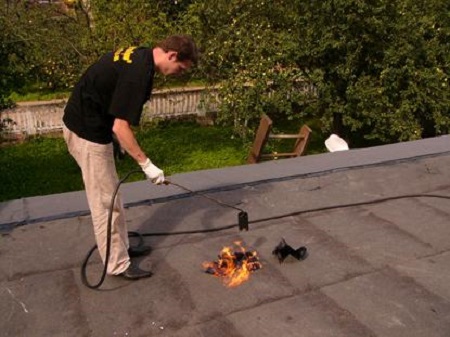
Remember: the dimensions of the material should be larger than the dimensions of the surface being repaired.
The edges should be well smeared with bitumen mastic.
It is worth saying that this method does not give a very high-quality result. But repair "in the old" is much more often in demand among developers.
Repairing a soft roof, the technology of which is laying the material according to the old method, is simpler - without removing the old cover.

Here you must not forget that the presence of two more layers will increase the load on the roof, so first you need to find out whether the support of the ceiling and walls can bear such a weight!
Example: the average weight of modern materials is 4-5 kg / m2, with a roof area of 1000 m2, the load on it will increase by 5 tons.
Soft roof: repair
First, the roof is cleaned of debris, dirt, etc. The new layer is covered in the usual way. But remember that this method is better not to apply in case of severe damage to the old cover or if there are already more than eight layers of material on the roof.
Overhaul of the soft roof includes the following processes:
- Replacement of roofing material.
- Repair of parapets, bases (screeds).
- Replacing eaves overhangs.
- Replacing adjoining aprons and guards.
- Repair and revision of drains and water inlets.
And if the roof of the house is too neglected, then you will not be limited to repair only. It will have to be built from scratch, which in one way or another will affect the cost of work.
Here's what the overhaul looks like:
- Removal (removal) of an old covering.
- Base repair.
- Laying waterproofing.
- Perform screed.
- Laying material intended for roofing.
- Laying the protective layer.
And here is a list of things that you will need to complete these tasks:
- Gas-burner.
- Roofing material.
- Bitumen mastic or sealant.
- Knife (cut roofing material).
- Broom (to clean the surface).
- Cement (for screed).
- Insulation.
- Overalls.

Do not confuse a gas torch with a blowtorch! According to professionals, using a blowtorch to heat the material, you will spend significantly more time than when using a burner.
Now consider the overhaul of the soft roof in more detail.
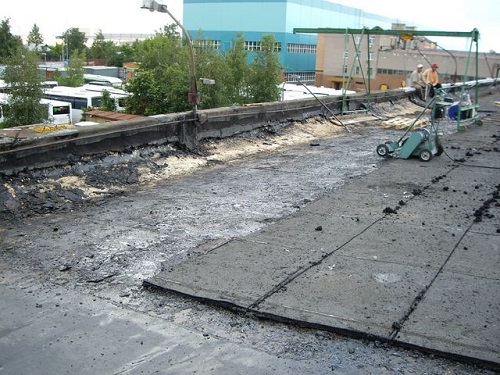
To perform the first stage - removing the old coating - you can use special equipment that removes and immediately rolls the coating on a roll.
Another option is an ax, where a wooden handle is replaced with a metal one. Moreover, its length determines the growth of a particular person.
After cleaning the surface, you need to check the base for dents, cracks, etc. If they are missing, you do not need to fill the screed.
In some cases, the screed is preceded by a heat-insulating layer, such as polystyrene or gravel.
Next is a bitumen primer. Covering the screed with a film, it blocks the evaporation of moisture from it.
When the cement has hardened, we proceed to laying the material for the roof. Despite the differences in the composition of the soft roof, it is better to use fiberglass materials. Unlike cardboard coatings, fiberglass-based materials are more durable and have high technical qualities.
Begin laying from the bottom of the roof. Each next row is overlapped - from 10 cm. The amount of overlap will depend on the angle of the roof slope.
Then the seams must be treated with bitumen mastic. After waiting a while, you can proceed to the next layer. It is laid in such a way that the seam of the previous coating layer does not coincide with the seam of the subsequent one.
Ruberoid, glassine and roofing only also require the installation of a protective cover, which is made from bitumen mastic. After it is sprinkled with crumbs of stone and rolled with a skating rink.
It is better, of course, to resort to materials of a new generation, which are already covered with a protective coating and allow you to abandon the lubrication of the seams between the rows. Thus, less material is wasted.
That's, in principle, the whole technology of repairing a soft roof - as you see, it’s not difficult. Two people will be able to calmly complete this work, and the choice of material for the coating is completely up to you.
And one more thing - remember that the audit of the roof cover (at least once every three years) and the removal of minor errors will save you from problems such as complete roof overlap, roof leakage during the rainy season, as well as from undesirable circumstances such as urgent repairs soft roof in the winter. Good luck to you!

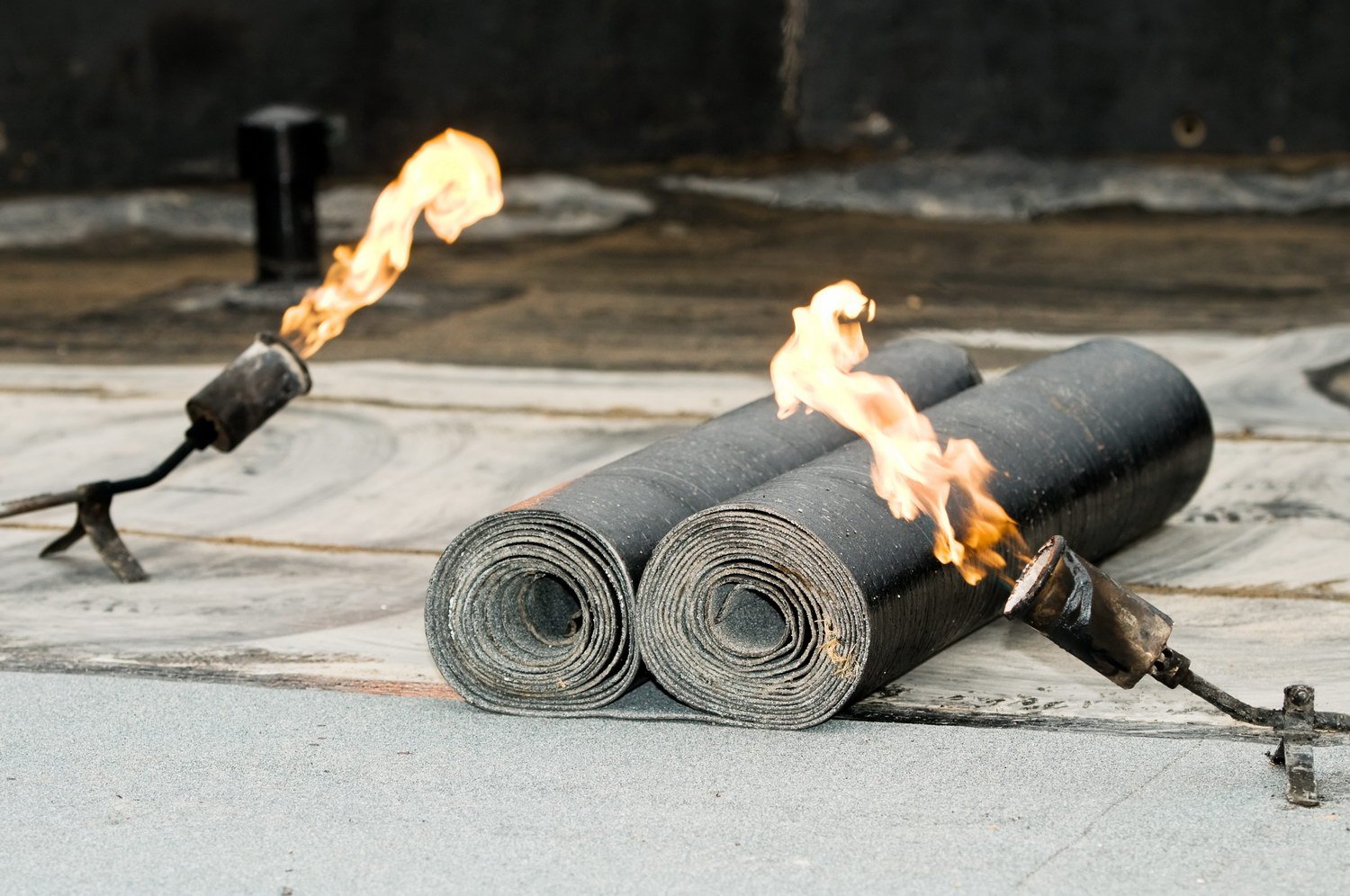
Alas, no comments yet. Be the first!